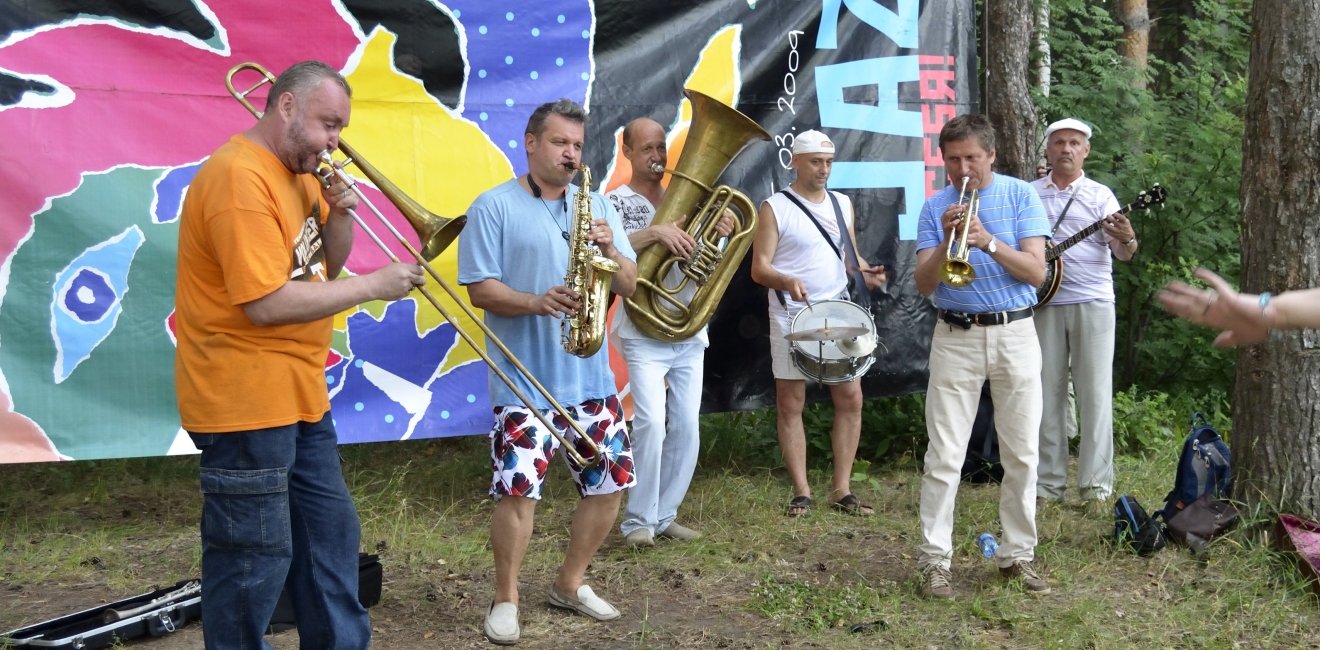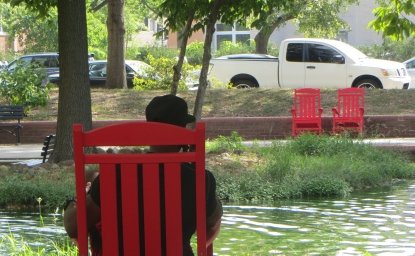The quiet Russian provincial city of Yaroslavl would hardly appear to be a hotbed of jazz. Located around 160 miles north east of Moscow on the Volga River, the city retains a charming historic center shaped by Catherine the Great’s planners in the eighteenth century, and embellished by the region’s wealthy merchants in the nineteenth. Founded in 1010 by Prince Yaroslav the Wise on the site of the prince’s legendary wrestling match with a bear, the city thrived as a center of trade and religion throughout the thirteenth, fourteenth, and fifteenth centuries. Shattered by Russia’s Time of Troubles (1598-1613), the settlement regained its lost dynamism following the establishment of the Romanov Dynasty in 1613.
Not surprisingly given the town’s wealth, Yaroslavl, throughout its history, supported a distinctive school of iconography, educational establishments, and literary culture, as well as Russia’s first theater. In many ways, the city and the estates spread across its surrounding region provided, before the Bolshevik Revolution, an ideal setting for a Chekov drama.
Yaroslavl grew rapidly during the Stalin-era industrialization drive of the 1930s, and continued to expand into a major industrial city throughout the Soviet period. Prior to World War I, Yaroslavl had been home to about 114,000 residents. That number increased more than fivefold during the Soviet era, reaching more than 600,000 by the end of the twentieth century. Industries and residential districts grew up in concentric circles around one of Russia’s best preserved historic cityscapes (which was among the very few largely spared by the ravages of World War II). As a result, the Yaroslavl historic cityscape retained a sense of self-contained solidity anchored by several striking sixteenth and seventeenth century cathedrals and monasteries as well as late imperial provincial administrative buildings.
More recently, Yaroslavl has been Russia’s hockey town, with the local professional team winning several Russian championships during the 1990s and 2000s. The connection between the sport and the city has become more passionate following a plane accident at the local airport on September 7, 2011 when the entire Lokomotiv team was killed as they were heading to their first match of a new season.
Throughout its long history Yaroslavl has proven to be close enough to Moscow to remain within its cultural and economic gravitational field; yet far enough away to retain and protect a modest degree of independent thought. Local notables include numerous innovators across the ages such as Valentina Tereshkova, the first woman in space, poets Nikolay Nekrasov and Mikhail Kuzmin, Russian theater pioneer Fyodor Volkov, rock critic Artemy Troitsky, Oscar-winning animator Aleksandr Petrov, musician Alex Sipiagin, and Gorbachev-era political reformer Alexander Yakovlev. Their stories often led such achievers far from the protective embrace of their provincial childhoods even as their youths shaped opportunities to see the world on their own terms.
One such local hero – Igor Gavrilov – chose to remain close to home. Like many of his generation, Gavrilov grew up in a Soviet Union that was neither open nor completely closed. The outside world could enter through shortwave broadcasts and tape cassettes as well as visiting performers on various cultural exchange programs. Won over to jazz by broadcasts on the Voice of America by the legendary announcer Willis Conover, Gavrilov found jazz wherever he could.
Unlike the immediate postwar periods when saxophones were declared illegal and subject to state confiscation, jazz had grudgingly won a degree of respectability by the time Gavrilov was growing up. The genre even had entered the curriculum at various conservatories around the country. Jazz nonetheless remained sufficiently daring to be of interest to slightly mutinous youth, such as the young Gavrilov.
Joining together with other university students and graduates of his generation – in Gavrilov’s case at the Yaroslavl State Pedagogical Institute -- he began organizing jazz concerts which, like the music, teetered on the edge of propriety. In March 1974, he established his first jazz club. Later, in 1979, he launched what has become Russia’s oldest jazz festival, Jazz Over the Volga, which immediately attracted world-class performers from around the Soviet Union and abroad. The newfound openness of post-Soviet Russia enabled Gavrilov to become ever more ambitious – especially as the local economy recovered from its collapse at the time of the fall of the Soviet Union.
The Yaroslavl Jazz Center continued to evolve and, in 1999, secured an elegantly modest historic building in the attractive center of Yaroslavl’s lovingly restored downtown. Gavrilov continued to recruit top-flight performers from Moscow, St. Petersburg, New York, and Berlin to take the stage in the Center’s invitingly small hall which seats several dozen listeners at a time. Visiting performers join with the staff in teaching jazz to local youth.
Beyond education Gavrilov, a natural historian, collected the Russian Jazz Archives. This venture has entered into partnerships with the Library of Congress and other major repositories to secure and protect Russia’s jazz legacy. Visitors such as the Library of Congress’s Larry Applebaum, the Senior Music Reference Specialist in its Music Division, have helped Gavrilov build his archive into an international facility.
Gavrilov has created a community asset which has kept both jazz and social connections alive through the various vicissitudes of his city’s and country’s post-Soviet transition. On any given night, Yaroslavtsy of all generations and social groups gather to hear such performers as Guntar Baby Sommer, Gunda Gottschalk, Aleksei Kruglov, among many. Visiting artists stay on to teach after their performances.
The Center’s audiences come together for a good time, of course. They also gather for the comfort of friends and the strength of community. Igor Gavrilov has, over the course of his career, nurtured all that is jazz at its best in a most unlikely setting.







